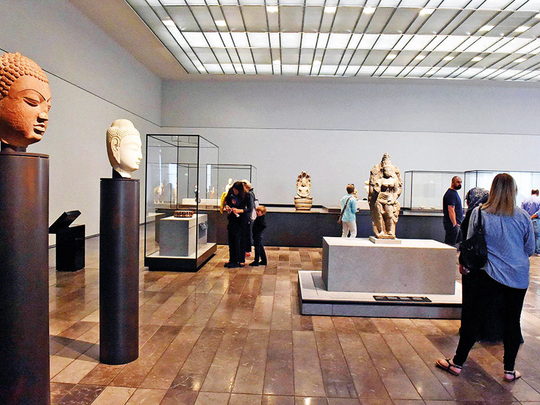
Abu Dhabi: Replete with hidden gems, the Asian Trade Routes gallery will require one to peer closely into the cases to appreciate the artefacts on display.
Tracing the development of trade between Asia, the Islamic world and Europe, the gallery shows how objects migrated across cultures and became valuable in lands far from their origin.
For instance, a pair of ewers look unnervingly similar, decorated with the heads of birds, yet one was sourced from China between 600 and 900 CE and the other was crafted in Iran between 1,100 and 1,300AD. This symbolises the profound links between Persia and China a millennia ago.
Nearby, a glass case holds a collection of unusual and dissimilar trinkets from Oman, China, Morocco, Italy and France. Each was used for burning incense, a substance that was often valued more than gold and used extensively across mosques, churches and temples. Incense is also said to have brought immense riches to exporting civilisations in Arabia and China.
Three intricately carved cases also depict the ivory trade that dominated the Middle Ages.
Branching off to a room with dimmed lighting, a rich mix of red, blue and orange on a luxurious 15th century Ottoman carpet introduces visitors to the history of textile arts.
There is also a 16th century tapestry of the crucifixion, and an early pair of silken boots from China.
Don’t miss either the hoard of silver dirhams dating back to the early Islamic caliphates. Although unremarkable at first glance, the coins give an insight into the trade links forged by Arabia.
This is the first gallery in the museum in which a painting is hung — that of a person carrying a censer, a container used for burning incense, created in 16th century Germany — heralding a growing focus on paintings to depict human concerns.
Timings and entry fee: 10am-8pm on Saturday, Sunday, Tuesday, Wednesday; 10am-10pm on Thursday and Friday
Dh60: Adults
Dh30: 13-22 years
Dh30: Education professionals
Free entry: Children under 13. Members of Louvre Abu Dhabi’s Art Club loyalty programme, journalists, visitors with specials needs and their companions











